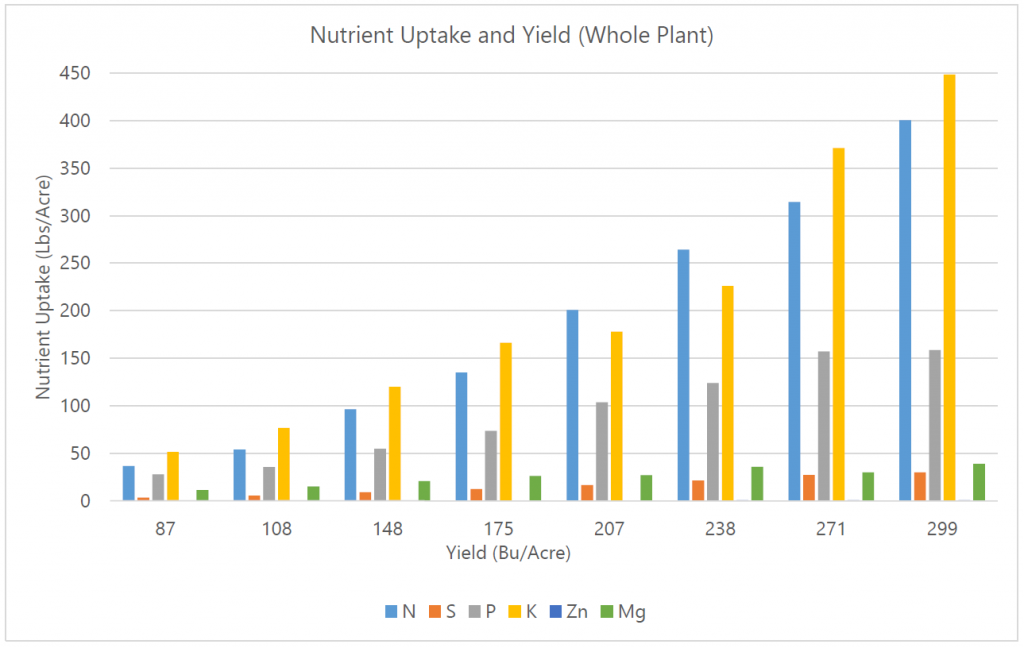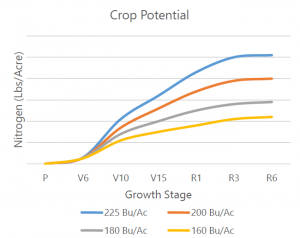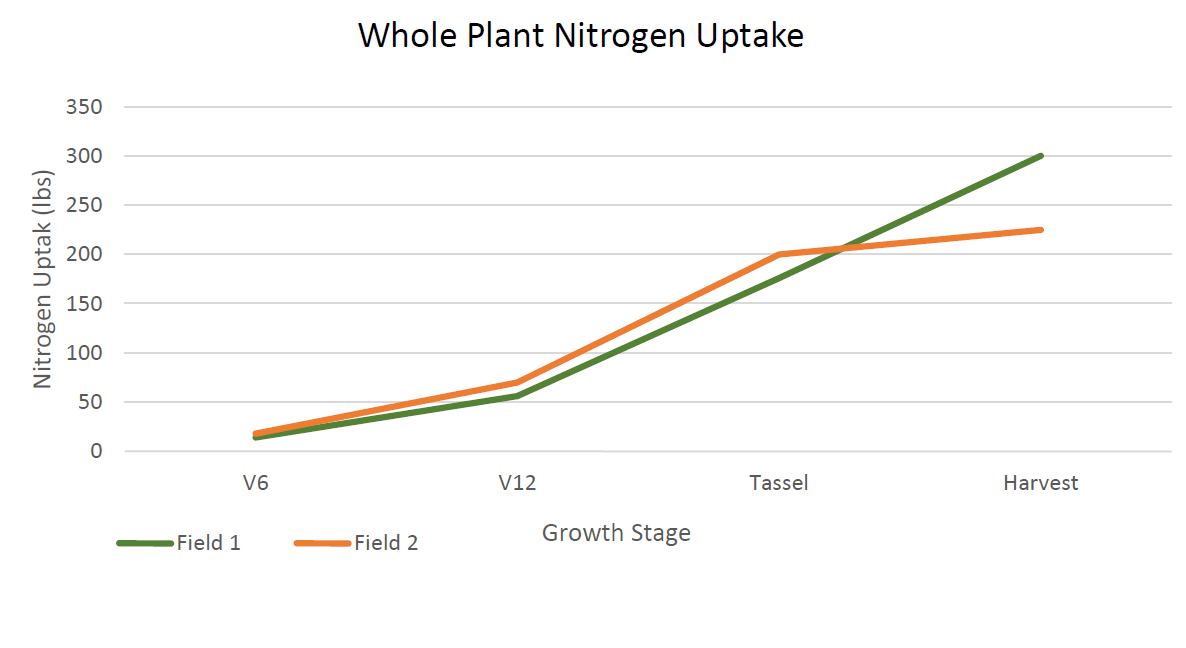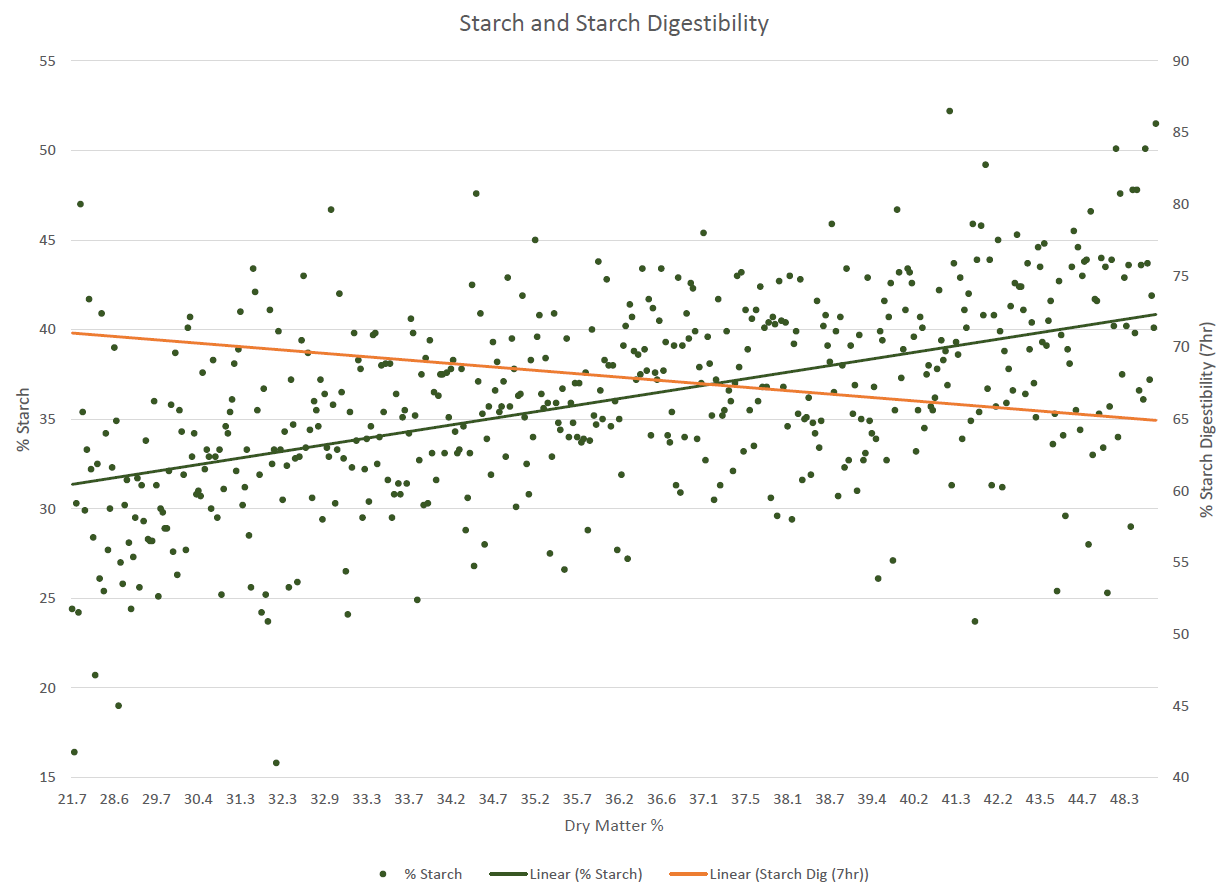How many pounds of nitrogen does it take to grow a decent crop of corn? This is a question we have all contemplated at onetime or another. It’s usually a precursor to a discussion on rates, timing, placement, chemical formulation, etc. but today I want to share some info on the original question; How many lbs of N,P,K,S, etc does it take to produce these big crops of corn.
 Research from Tony Vyn shows that if yield increases by 3X (108 to 299 bu/acre) you remove 8X N, 9X K, and 10X S from the ground.
Research from Tony Vyn shows that if yield increases by 3X (108 to 299 bu/acre) you remove 8X N, 9X K, and 10X S from the ground.
As you can see in the chart above, the nutrients required are dependant on your final yield. Higher yielding crops have a much greater demand for nutrients than lower yielding ones. In the case of nitrogen, you need approximately 65 lbs more N for every 30 bu increase in yield. Fields that used to yield 175 bu and yielded 240 last year use double (130 lbs more) the amount of nitrogen to make that crop.
 Crop potential can be established in the mid
Crop potential can be established in the mid
vegetative growth stages and we can use this information to nail down our final nitrogen recommendation. Fields that have more lbs of N,P,K/acre out of the ground earlier in the growing season turn into higher yielding crops.
Because of the differences in the requirement for nitrogen we recommend analyzing the crop potential earlier in season to determine your optimum nitrogen rate.
If you are planning a late N application this year, consider using whole plant analysis to know when to chase the big yield or save your money on a crop that may not need much additional N.
The cost of a whole plant analysis is $40.00 and the results will be available 2 days after we receive the sample.



